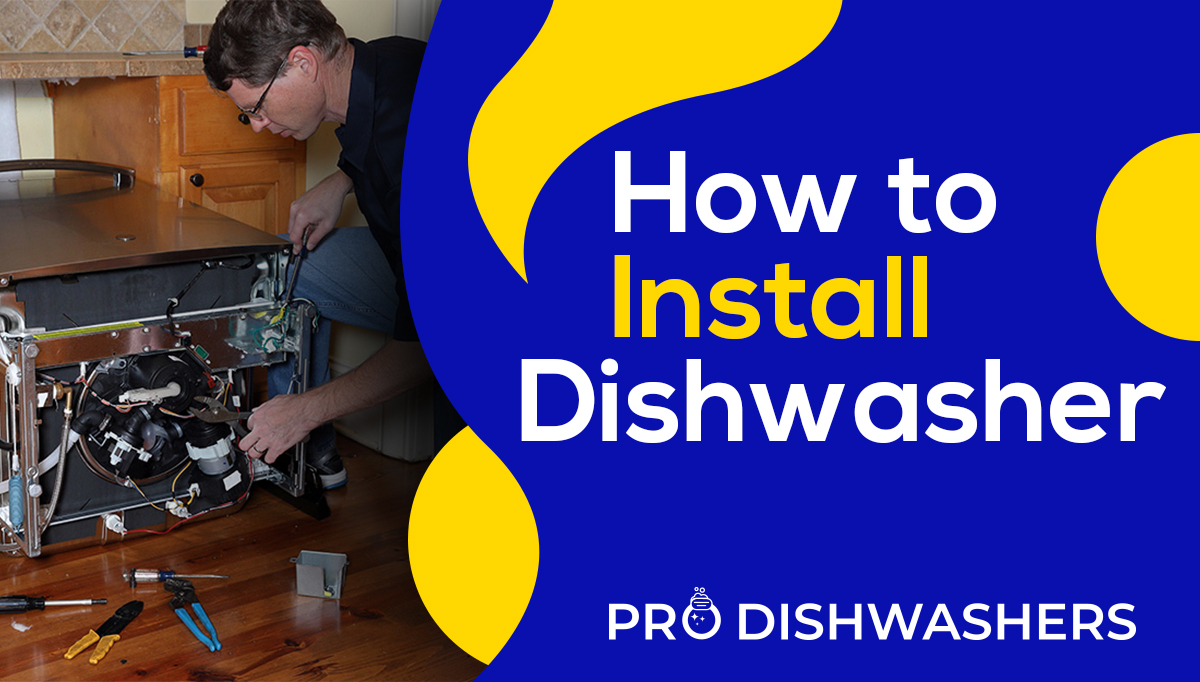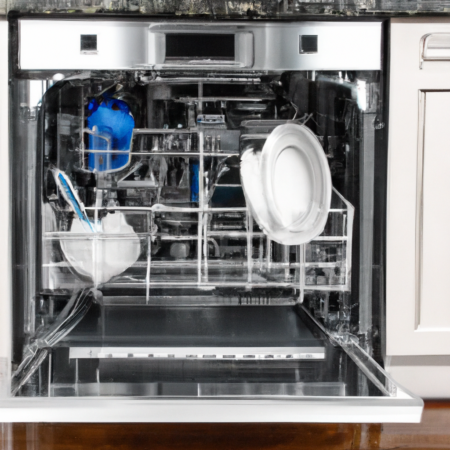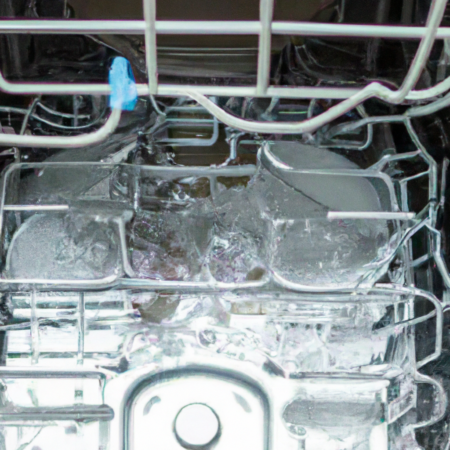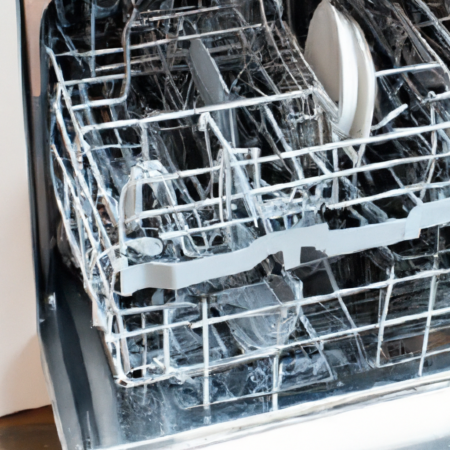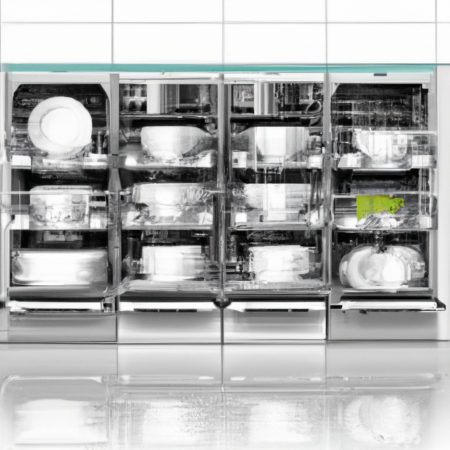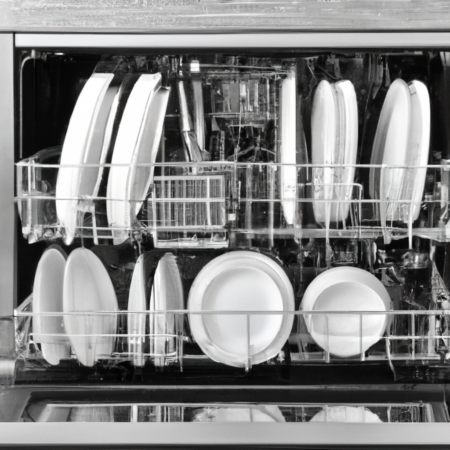Introduction to How to Load a Dishwasher
Hello, friends! Today, we will learn the best way to load a dishwasher for optimal cleaning and efficiency. Loading a dishwasher properly is essential to make sure your dishes come out sparkling clean. In this blog post, we will cover the right way to load your dishwasher, from the bottom rack to the top rack.
Handle with Care: Preventing Spray Arm Obstruction
When loading items with handles, such as measuring cups or ladles, it’s essential to ensure that they don’t interfere with the spray arm’s movement. If these items get turned or positioned incorrectly, they can stop the spray arm from turning, leading to poor cleaning results.
To avoid this issue, follow these steps when loading items with handles:
- Choose the right location: Place items with handles in the appropriate sections of the dishwasher, taking care to keep them away from the spray arm. For instance, larger utensils can be placed on the bottom rack, while smaller ones can be put in the utensil basket on the top rack.
- Secure the handles: Make sure the handles of these items are secured and not protruding outwards, where they could potentially block the spray arm. If necessary, use the adjustable tines or clips provided in your dishwasher to hold the handles in place.
- Double-check before starting: Before starting your dishwasher, give the spray arm a gentle spin to ensure it can move freely without any obstruction. If you notice any interference, adjust the position of the items with handles accordingly.
By paying attention to the placement of items with handles, you can prevent spray arm obstruction and ensure your dishwasher operates at its full potential, leaving your dishes spotless and clean.
Bottom Rack First
When loading your dishwasher, start by placing larger items like pots and pans on the bottom rack. Make sure to face the dirty sides down so that the spray arm and detergent can get the job done. Stainless steel and silver cutting boards should also go on the bottom rack.
Place smaller items like bowls and mugs on the bottom rack as well, facing down. You can also put larger utensils like spatulas and serving spoons on the bottom rack. Keep in mind to unload the bottom rack first to avoid water from the top rack spilling onto your clean dishes.
Loading the Top Rack
Next, let’s focus on the top rack of the dishwasher. Glasses and cups should be placed on the top rack, upside down. This prevents water from pooling inside and helps them dry properly. Wine glasses should also go on the top rack, but make sure to secure them with the tines on the rack to prevent them from moving around during the cycle.
Items made from dishwasher-safe plastic should be placed in the top rack as well, as the heating element at the bottom of the dishwasher can cause them to melt or warp. Small bowls can be placed on the sides of the top rack, facing down.
Silverware Basket
Now, let’s talk about the silverware basket. To load silverware, like forks and spoons, place them in the basket with the handles facing down. This allows water and detergent to reach the dirty parts of the utensils more easily. However, knives should be placed with the handles facing up to avoid accidents when unloading the dishwasher.
Proper Way to Load Utensils
When loading utensils, make sure not to overcrowd the utensil basket. This ensures that water and detergent can flow freely and clean your utensils properly. Place forks and spoons on the sides of the utensil basket, while knives should be placed in the center of the basket for safety reasons.
Rinsing and Pre-rinsing
Before loading your dishwasher, it’s a good idea to give your dishes a quick rinse to remove any large bits of food. This helps the dishwasher detergent work more effectively and can lead to better results. However, pre-rinsing is not always necessary, as most new dishwasher models are designed to handle small amounts of leftover food.
Using the Right Detergent
Choosing the right dishwasher detergent is essential for getting your dishes clean. The detergent is designed to interact with the water and break down food particles, so using the correct amount and type of detergent is crucial for the best results. Be sure to follow the manufacturer’s instructions on your dishwasher model for optimal performance.
Running a Full Load
One important tip to remember when using your dishwasher is to wait until it is full before running it. This not only conserves water and energy but also ensures that the dishwasher can clean all the items in your dishwasher effectively. However, avoid overloading the dishwasher, as this can prevent water and detergent from reaching all your dishes and lead to poor cleaning results.
With these tips, you are now ready to load your dishwasher the right way and enjoy sparkling clean dishes every time! Stay tuned for the second half of this blog post, where we will cover even more tips and tricks to make your dishwasher use as efficient and effective as possible. Happy dishwashing!
Frequently Asked Questions (FAQ)
How do I load large items like platters and baking sheets in my dishwasher?
Large items like platters and baking sheets should be placed on the bottom rack of the dishwasher, ensuring they do not block the spray arm or prevent the detergent from reaching other items. You may need to adjust the tines on the bottom rack to accommodate these larger items.
Can I mix stainless steel and silver items in the dishwasher?
Yes, you can mix stainless steel and silver items in the dishwasher. However, it’s best to keep them separate in the silverware basket to avoid any potential chemical reactions that could cause discoloration.
What should I do if my dishwasher isn’t cleaning my dishes properly?
If your dishwasher isn’t cleaning your dishes properly, try the following steps:
- Check to see if you’re loading the dishwasher correctly.
- Make sure you’re using the right amount and type of detergent.
- Inspect the spray arm for clogs or damage.
- Clean the dishwasher’s filter and check for any debris.
- Run a dishwasher cleaning cycle with a commercial cleaner or white vinegar. If the problem persists, consult your dishwasher’s user manual or contact a professional appliance repair service.
How often should I clean my dishwasher?
It’s a good practice to clean your dishwasher at least once a month. This includes checking and cleaning the filter, wiping down the door and seals, and running a dishwasher cleaning cycle with a commercial cleaner or white vinegar.
Can I put wooden items in the dishwasher?
Wooden items, like cutting boards and wooden utensils, are generally not dishwasher-safe. The heat and water can cause them to warp, crack, or lose their finish. It’s best to wash wooden items by hand.
Should I use rinse aid in my dishwasher?
Using rinse aid in your dishwasher can help improve the drying performance and reduce water spots on your dishes. Most dishwashers have a rinse aid dispenser that you can fill according to the manufacturer’s instructions.
What types of items should not be placed in the dishwasher?
Some items that should not be placed in the dishwasher include:
- Wooden items
- Cast iron cookware
- Non-stick pots and pans (unless specifically labeled as dishwasher-safe)
- Sharp knives (as they can become dull)
- Delicate glassware or china
- Items with gold or silver leaf decorations Always check the manufacturer’s guidelines for each item to determine if it is dishwasher-safe.
How can I prevent my plastic items from melting or warping in the dishwasher?
To prevent plastic items from melting or warping, place them on the top rack of the dishwasher, away from the heating element at the bottom. This will help protect them from the high heat generated during the dishwasher cycle. Additionally, ensure that the items are labeled as dishwasher-safe before placing them in the appliance.








